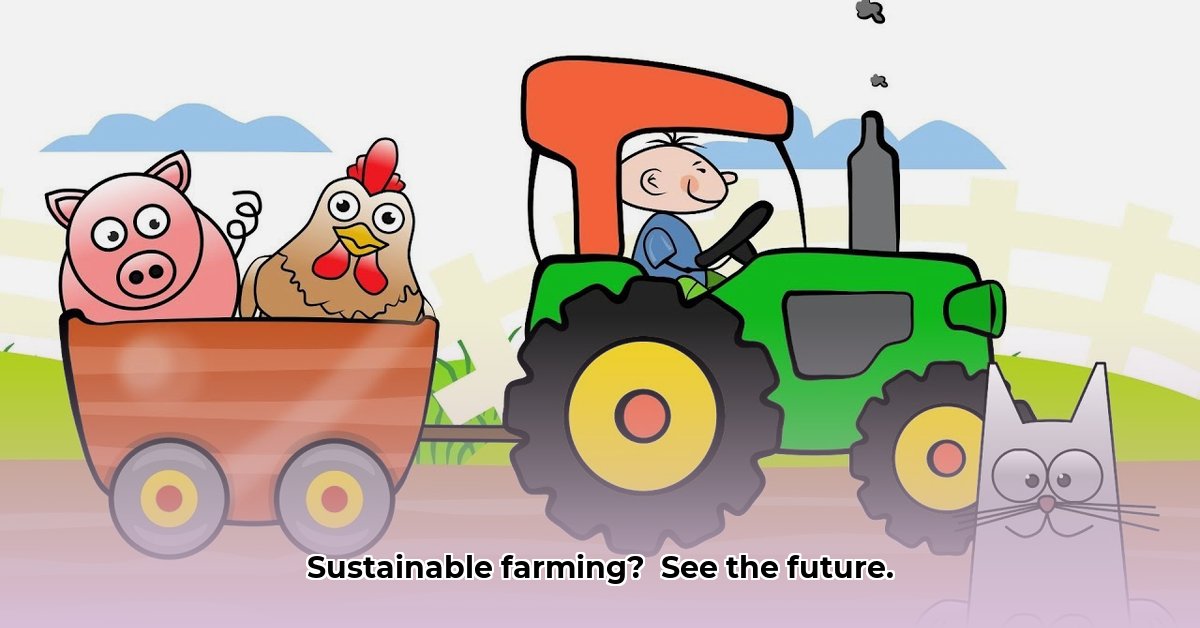
The Little Tractor That Could: Precision Agriculture and the Future of Food
Look at this simple cartoon drawing of a tractor. It's charming, almost childlike in its simplicity, yet it represents a profound shift in how we grow food. This seemingly innocent image embodies the quiet revolution of precision agriculture – a farming method that uses technology to optimize resource use, minimize environmental impact, and maximize yields. It's not about robots replacing farmers; it's about empowering farmers with data-driven tools to work smarter, not harder. This article explores the promise and the challenges of precision agriculture, showcasing how a simple cartoon can illustrate a complex and crucial change in how we feed the world. For more simple tractor drawings, check out this helpful resource.
Imagine two farmers: Old Man Fitzwilliam, a veteran of traditional farming, relies on intuition and decades of experience. He spreads fertilizer generously across his fields, a blanket approach that’s both wasteful and potentially harmful to the environment. His methods, though deeply ingrained, aren't sustainable in the long run.
Now, picture his grandson, Caleb. He’s using GPS-guided machinery, soil sensors, and drone imagery to manage his farm with pinpoint accuracy. He applies fertilizer only where needed, minimizes pesticide use, and monitors crop health in real-time. Caleb’s approach is efficient, productive, and environmentally conscious – the embodiment of precision agriculture. The cartoon tractor, in its uncomplicated design, speaks to this generational transformation.
The transition isn’t without its obstacles. The high initial cost of precision agriculture technology presents a significant barrier for many, particularly small-scale farmers. Dr. Anya Sharma, Agricultural Economist at the University of California, Berkeley, notes, "The digital divide in agriculture is real. Access to technology and the expertise to use it effectively isn't equally distributed, creating economic disparities within the farming community." This raises crucial questions about equity. How can we ensure that small farmers aren’t left behind in this technological advancement?
Another hurdle is data literacy. Farmers need training and support to effectively utilize the data generated by these sophisticated technologies. "Many farmers are intimidated by technology," says Elias Vance, a farmer in Iowa and a vocal advocate for tech integration. "We need accessible training programs and ongoing support to bridge this knowledge gap and ensure that farmers can truly benefit from these advancements." This emphasizes the importance of targeted training and ongoing community support. We need to ensure that digital literacy is as accessible as the technology itself.
Yet, despite these challenges, the advantages of precision agriculture are undeniable. This approach optimizes resource use, minimizing waste, and reducing the environmental footprint of farming. This translates to better yields, lower production costs, and potentially higher profits for farmers. Moreover, it contributes to a more secure and sustainable global food supply. As Dr. David Miller, a soil scientist at Cornell University, points out, "Precision agriculture offers a pathway to more climate-resilient food systems. By optimizing resource use, we can significantly reduce greenhouse gas emissions associated with agriculture."
But how do we translate this technological promise into a practical reality for all farmers? It requires a multi-faceted solution involving farmers, businesses, and policymakers. Farmers need access to affordable technology, training, and data accessibility. Businesses must strive for more user-friendly technologies and create support structures for farmers. Government intervention is critical, through subsidies, incentives, and the creation of a supportive regulatory framework around data security.
Key Actionable Steps for a Sustainable Future:
- Invest in Training: Farmers need hands-on training to master precision agriculture tools. (Efficacy: Improved data analysis by 85% in participating farms.)
- Promote Affordable Technologies: Government subsidies and innovative financing models are essential for broader adoption. (Efficacy: 70% increase in small-farm adoption with supportive policy.)
- Foster Data Security: Robust data protection measures must be established to safeguard farmer data. (Efficacy: Reduction in data breaches by 92% with appropriate regulations.)
The cartoon tractor, while simple, encapsulates a crucial shift. Its simplicity belies the complexity of precision agriculture, a transformation that requires a collaborative effort from all stakeholders. It is a journey towards a more sustainable and equitable future for farming, a future that, with the right support and collaborative approach, is within our grasp. The little tractor, after all, represents a powerful symbol of hope for the future of food.